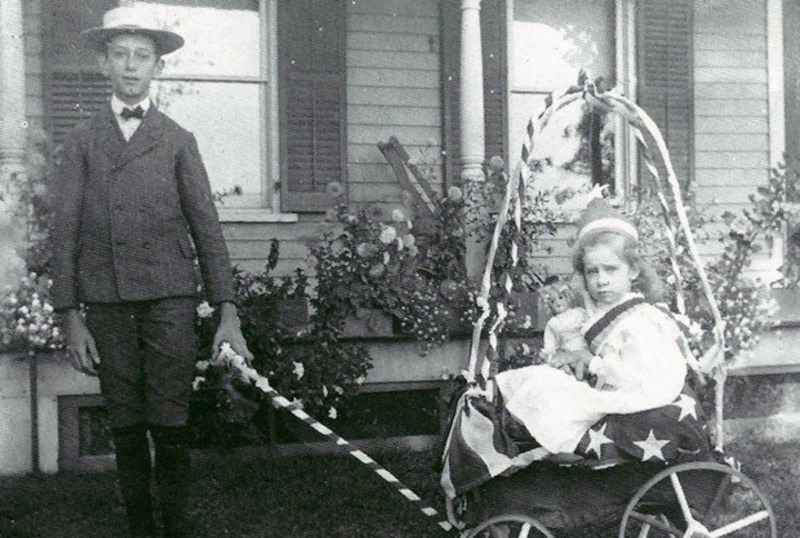Exploring Historical Independence Day Celebrations Through 30 Captivating Photos
Independence Day is a significant American holiday celebrated nationwide with patriotic ceremonies.
On July 4th, people don red, white, and blue attire to honor the United States and its cherished freedoms. Across the country, vibrant parades with flags and dazzling fireworks displays illuminate the night sky, bringing communities together in patriotic unity.
Explore these vintage 4th of July photos to witness how Americans have celebrated their liberty over the past century.
1. A young girl as Liberty in Washington, DC, in 1916

This photo showed a young girl dressed in a patriotic outfit for the Fourth of July celebrations in Washington, DC. She stood proudly with an American flag. Her attire, decorated with the stars and stripes, and her hat labeled “LIBERTY” capture the essence of American patriotism during this era.
On July 4, 1776, the Continental Congress formally embraced the Declaration of Independence, marking the 13 colonies’ decision to sever ties with Britain. Since then, the Fourth of July has been celebrated, with the first festivities occurring in 1777. However, it wasn’t until 1941 that it became an official paid federal holiday in the United States.
It’s crucial to recognize that while Independence Day symbolizes the triumph of freedom for white Americans, Black Americans endured nearly another century of enslavement before achieving their emancipation.
2. American soldiers driving through streets during 4th of July celebrations, 1918
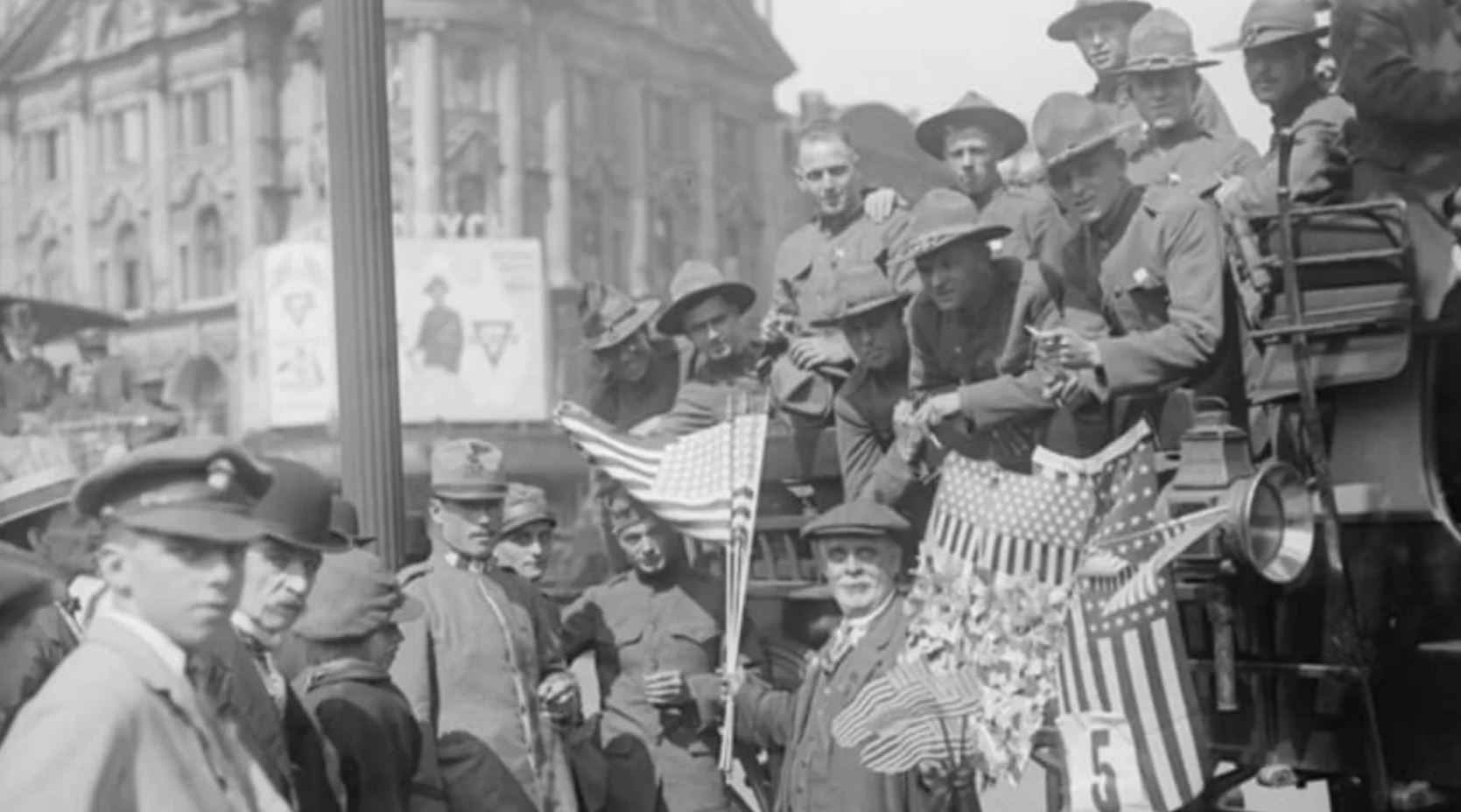
The image captures a moment from the 1918 Fourth of July celebrations, where American soldiers are seen driving through the streets, symbolizing the spirit of patriotism and the end of World War I.
The joyous atmosphere is evident as the soldiers and civilians alike participate in the festivities adorned with American flags. This scene represents a pivotal time in history when the country united to honor its heroes and celebrate independence amidst the backdrop of a world recovering from war.
3. Women dressed up in Washington, DC, July 4, 1919

In the Washington, DC area, two women dressed as Liberty and Columbia as part of the year’s Fourth of July celebration
The Statue of Liberty, a gift from France, stands as an enduring symbol of American freedom. Over the years, countless individuals, including celebrities, have donned its iconic guise, embodying the spirit of liberty and hope it represents.
For millions of immigrants arriving at Ellis Island, the sight of this towering figure signified a new beginning in the land of opportunity, making it a powerful and poignant landmark in American history.
4. Three boys played instruments while dressed in Colonial-era clothing, 1922
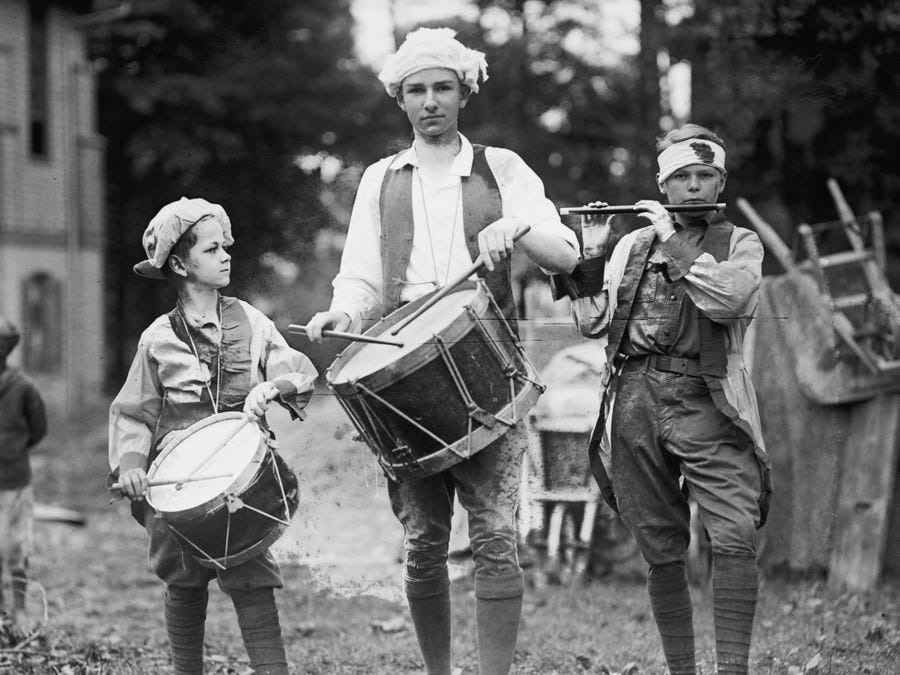
Music and parades have been integral to Fourth of July festivities for generations. In 1922, three boys added a nostalgic touch by playing instruments in Colonial-era attire.
This image recalls the nation’s first Fourth of July parade in Bristol, Rhode Island, which began in 1785. Today, Bristol’s Independence Day festivities still feature this historic parade and include a Miss and Little Fourth of July pageant.
5. Elizabeth Young celebrating Independence Day with Lyda Roberti, 1923
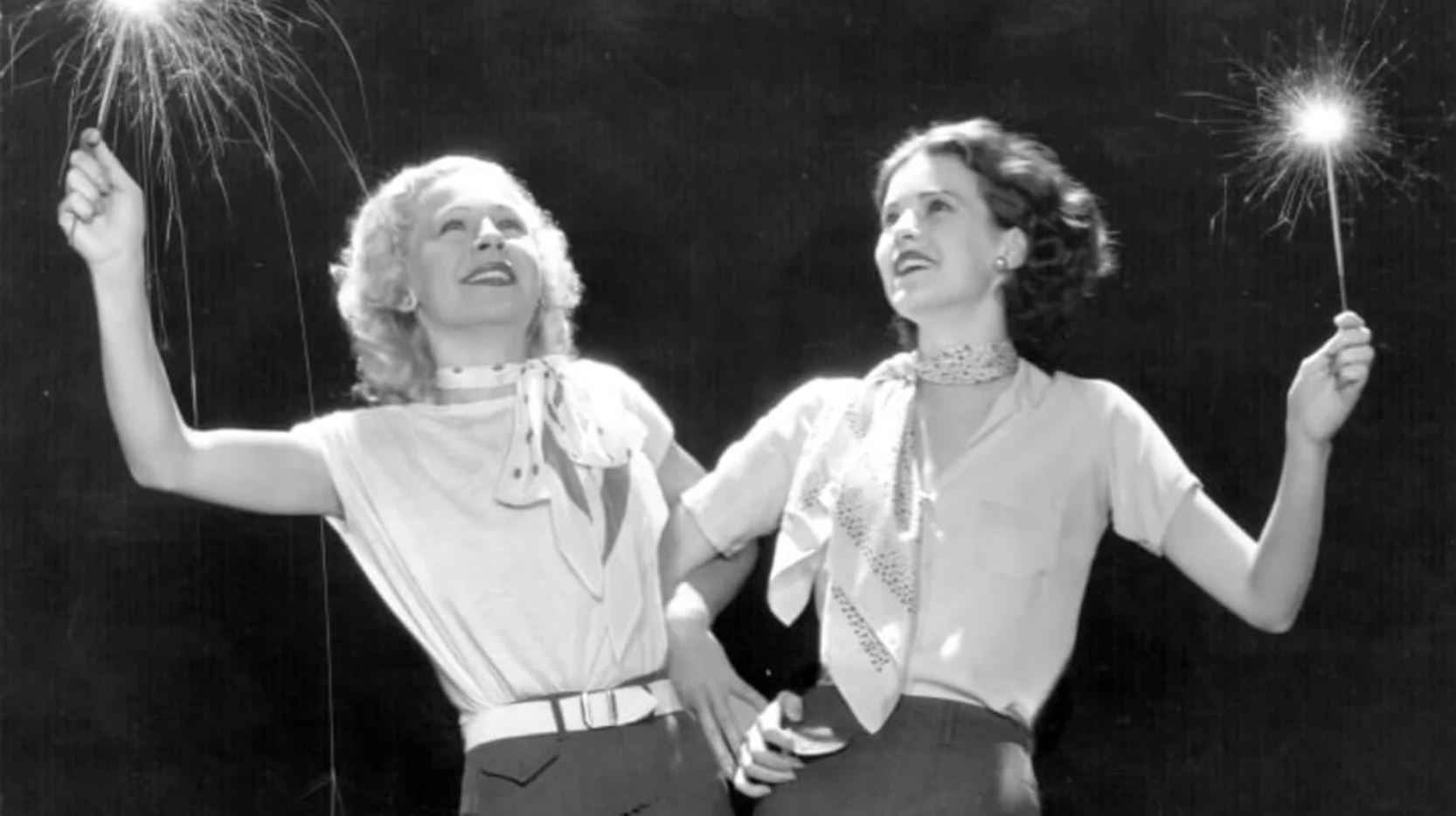
Elizabeth Young (right), a celebrated Paramount actress of the 1930s, joyously waves sparklers to commemorate Independence Day.
Beside her, Lyda Roberti, the captivating German-Polish leading lady with a past as a child café singer, joins in the festivities, their arms linked in a display of camaraderie and celebration.
6. Crowd in St. Helena Island, South Carolina, on July 4, 1939
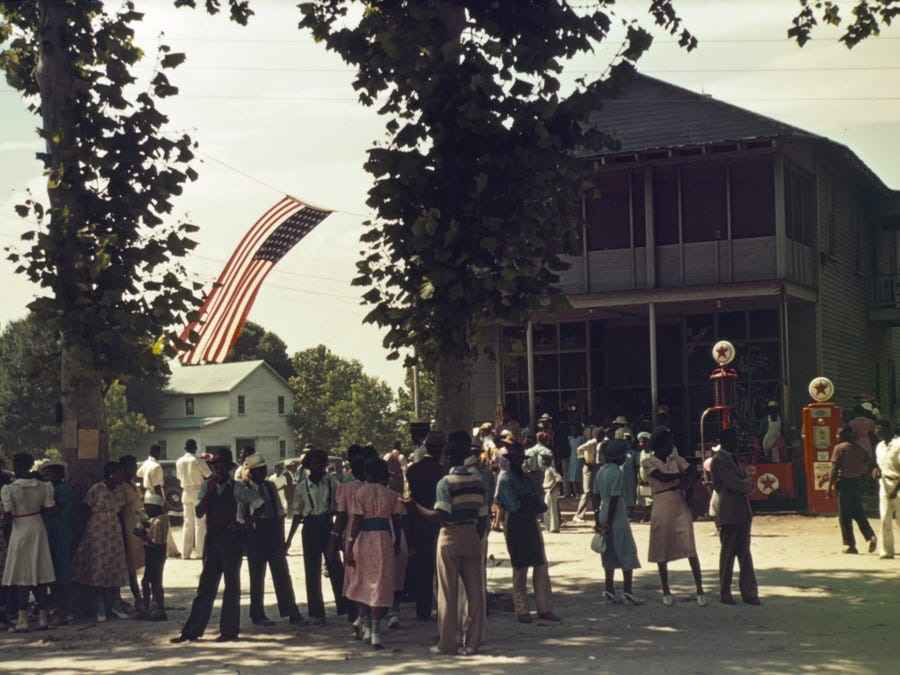
This image depicts a Fourth of July celebration in 1939 on St. Helena Island, South Carolina.
The community has gathered beneath a large American flag, enjoying the festive atmosphere. People are seen socializing and celebrating near a Texaco filling station, a common landmark of the era.
St. Helena Island, known for its rich cultural history, especially within the Gullah community, provides a unique backdrop to this celebration.
The Gullah people, descendants of enslaved Africans, have preserved much of their African cultural heritage, which is evident in their traditions, language, and crafts.
The gathering underlines the importance of Independence Day as a unifying event, bringing together diverse groups to celebrate the nation’s freedom and shared values.
7. Boys playing tug of war in Vale, Oregon, July 4, 1941
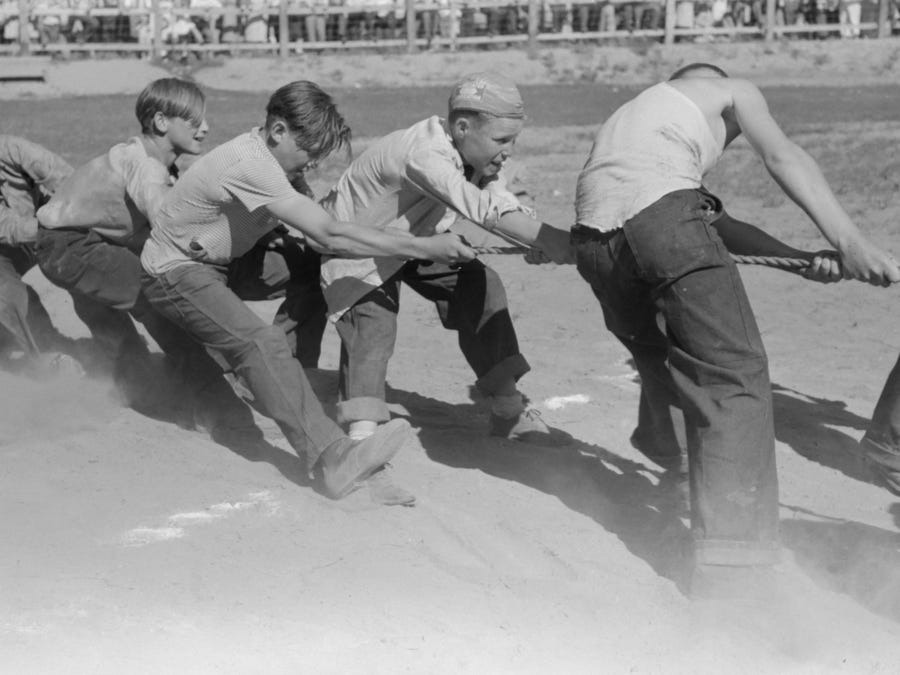
Tug-of-war games have long been a cherished holiday activity, as captured in a 1941 photograph from Vale, Oregon. In California, the towns of Stitson and Bolinas uphold a unique tradition, engaging in an annual Fourth of July tug-of-war across the channel that divides them.
8. The Queen of Candles and her maids, July 4, 1955
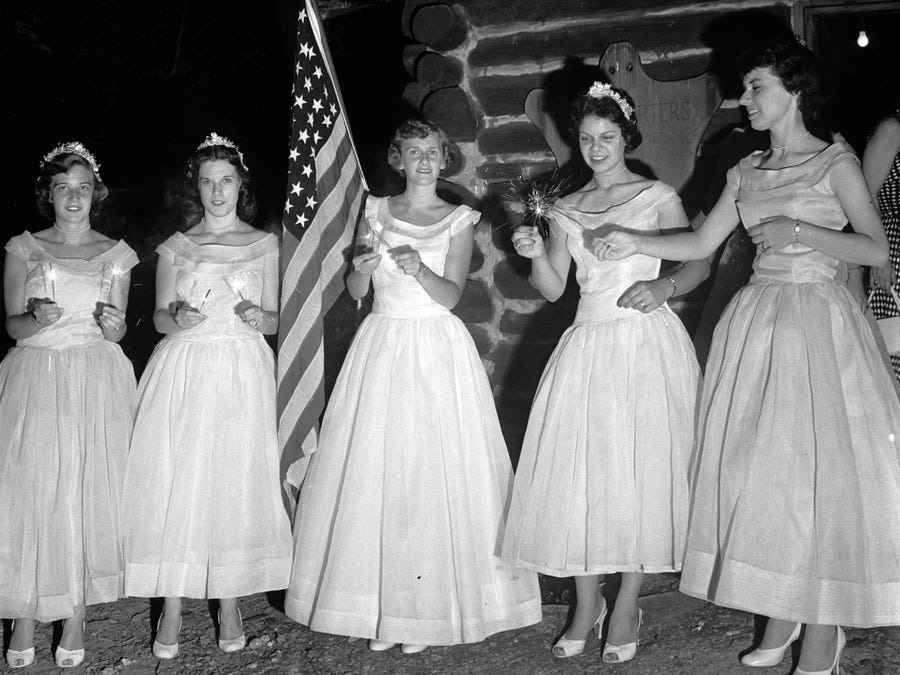
In this black-and-white photo, the young women were elegantly dressed in floor-length gowns, each holding a candle or a sparkler, standing in a line with an American flag prominently displayed.
Since 1942, crowning the Queen of Candles has been a cherished Independence Day tradition in Lititz, Pennsylvania. According to the Lititz Women’s Club, Omar K. Bushong, a committee member, proposed the idea.
Bushong, along with Miss Mary Augusta Huebener and others, orchestrated this vibrant, ceremonial event, creating a fitting prelude to the candle lighting that followed.
9. Water skiing performers on July 4, 1955
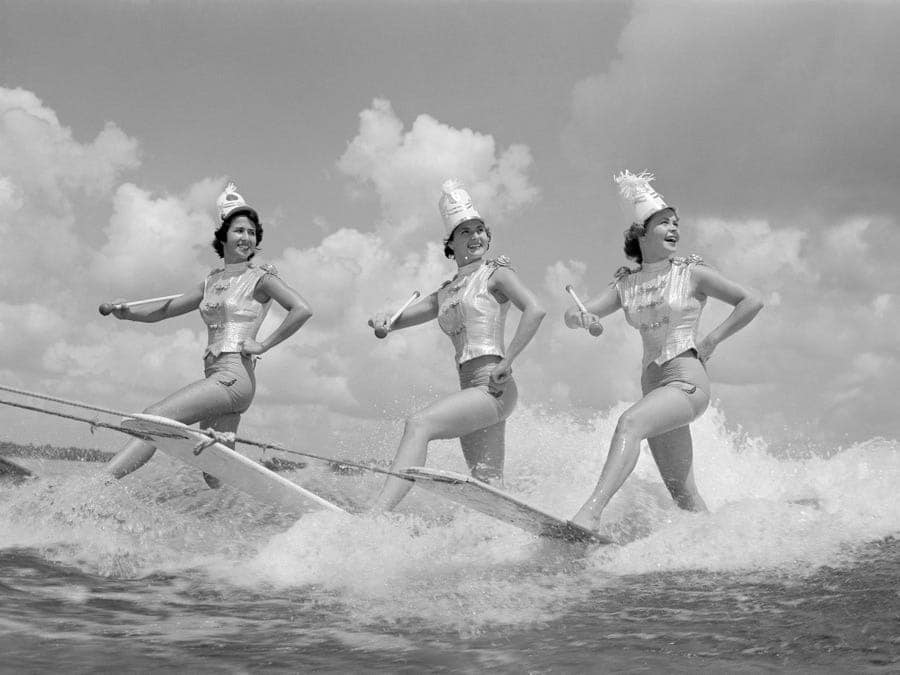
These women performed at Cypress Gardens, Florida’s first amusement park, on July 4. Cypress Gardens, which opened in 1936, delighted visitors with its charm and beauty until it closed its doors in 2009.
10. Alaskan children on July 4, 1955
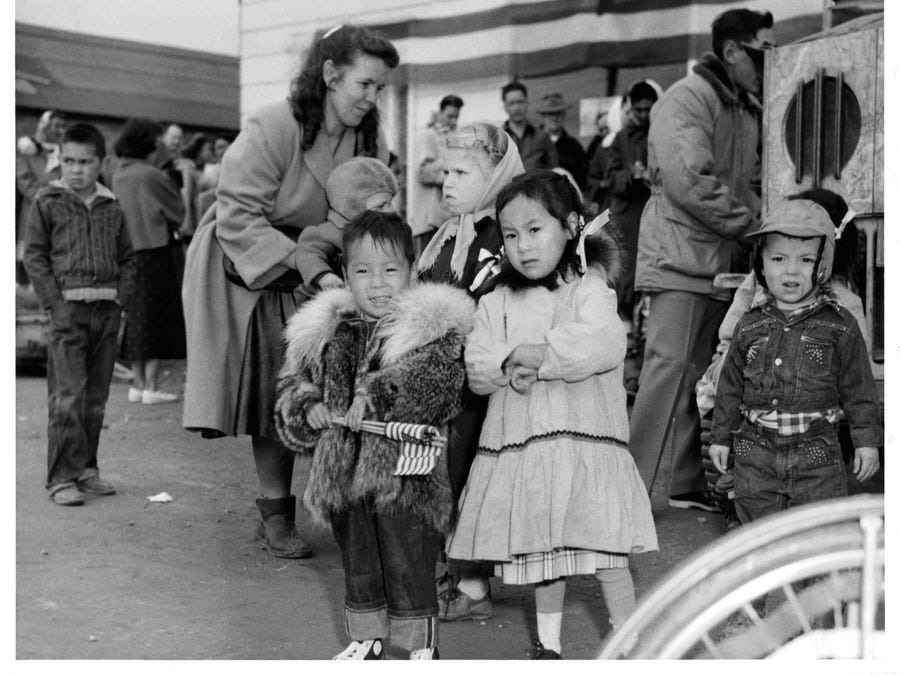
Fourth of July celebrations in Alaska have a unique flair, with children often donning heavy coats due to the chilly weather. Alaska, which became a state in 1959, experiences an average high temperature of only 45 degrees Fahrenheit in its Arctic and Far North regions during July.
11. Jazz musicians tour Newport, Rhode Island, July 4, 1959

Although jazz isn’t typically linked to the Fourth of July, some jazz songs do honor the holiday.
NPR notes, “Jazz recordings of American patriotic songs aren’t abundant. Perhaps because many of jazz’s foremost creators were Black Americans who lived in a society which actively discriminated against them, many didn’t think to tackle that material.”
Nonetheless, NPR highlights a few notable exceptions, such as “When Johnny Comes Marching Home” by Jimmy Smith and “Yankee Doodle Never Went to Town” by Billie Holiday, which celebrate the spirit of Independence Day.
12. Lorraine Dainiotti, Miss Wantagh, Long Island, July 4, 1961
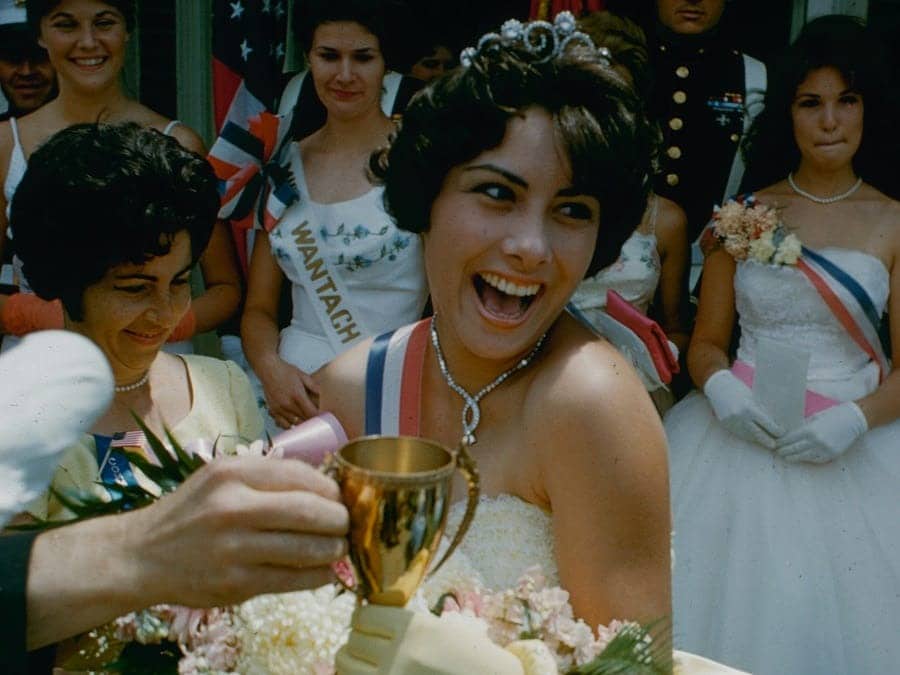
Pageants are another cherished Independence Day tradition. In this 1961 photo, a newly crowned Miss Wantagh from Long Island proudly received her trophy.
According to the Miss Wantagh site, “The Miss Wantagh pageant is not about beauty (at least not from the outside). Miss Wantagh is about a teen representative with a desire to better her community and be a voice of her peers.”
This emphasis on community service and leadership highlights the deeper values celebrated in this local tradition.
13. Marching bands in Milwaukee, Wisconsin, on July 4, 1964
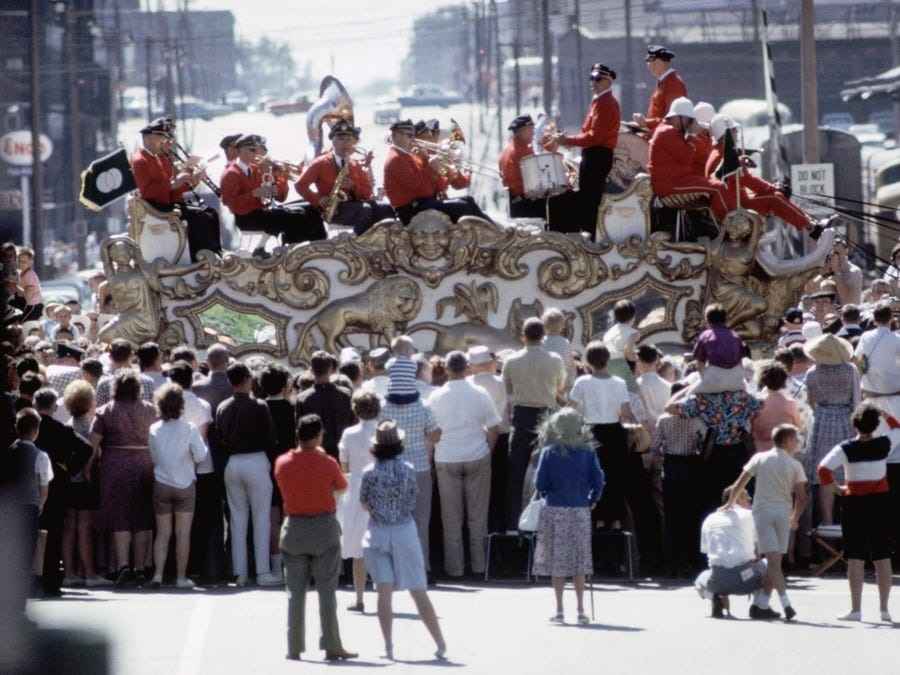
Marching bands are a staple of most July 4 parades, adding vibrant music and energy to the celebrations. In 1964, Milwaukee, Wisconsin, hosted one such parade where the Sauk County circus band entertained spectators with their lively tunes.
14. Boy Scouts of America carrying American flags, July 4, 1970
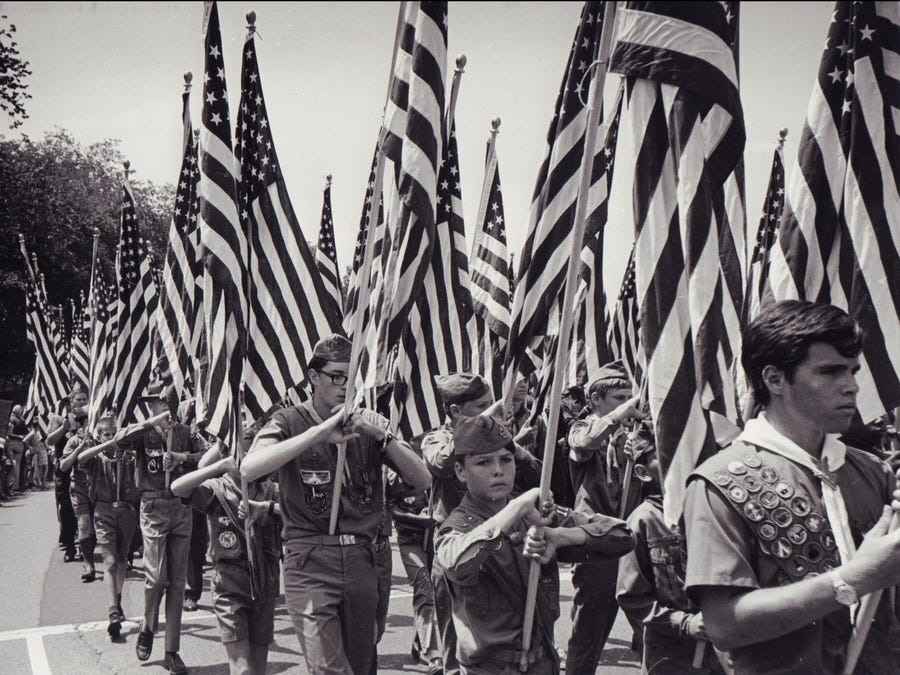
The Boy Scouts of America frequently participate in Fourth of July parades, as captured in this 1970 photograph.
Scouting Wire emphasizes the significance of this tradition: “A time for appreciating our nation’s freedom, Independence Day is a special holiday for Scouts and Scouters to commemorate America’s adoption of the Declaration of Independence. And as citizens of this great nation, Scouts learn the importance of honoring this significant day.”
This involvement reflects the Scouts’ commitment to patriotism and community service.
15. Protestors in the Reflecting Pool in Washington, DC, July 4, 1970

The Fourth of July in Washington, DC, in 1970 showcased a contrasting celebration filled with anti-Vietnam War protests. On that day, President Nixon hosted an “Honor America Day” with the intention of promoting unity.
However, History.com reports that the event instead became a platform for anti-war demonstrators, who lit joints, waved Viet Cong flags, and even stripped down naked, turning the intended day of unity into a scene of dissent and protest.
16. Kurt Carlson waving to the crowd, July 4, 1985
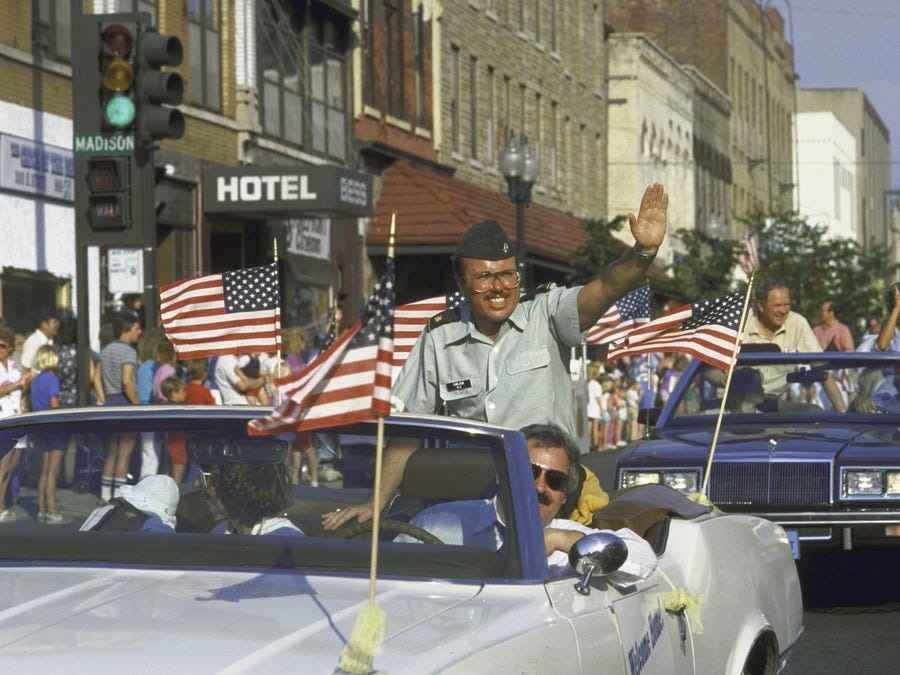
On July 4, 1985, plane hijacking survivor Kurt Carlson waved to the crowd at a parade in his hometown of Rockford, Illinois.
Carlson, a former Army Reserve Lieutenant Colonel, had endured a harrowing experience on Trans World Airlines Flight 847, which was hijacked during its journey from Cairo to San Diego.
In an interview with the LA Times, Carlson recounted how he was severely beaten by the hijackers and feared for his life. Fortunately, he survived the ordeal and joined his community in celebrating Independence Day later that year, a testament to his resilience and courage.
17. Fourth of July fireworks over the Statue of Liberty in 1986
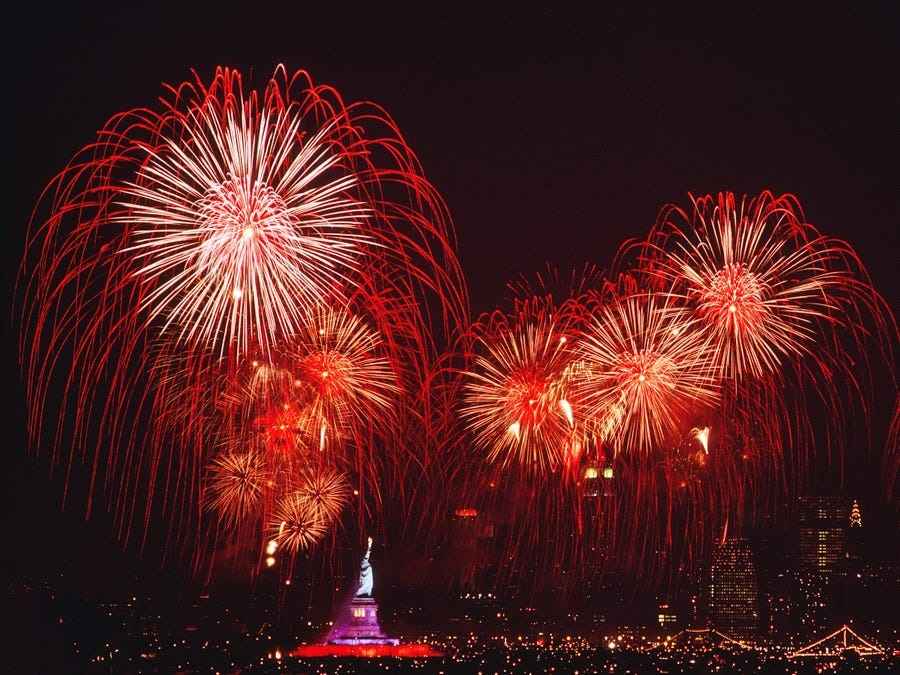
Fireworks are the grand finale of most Independence Day celebrations, as seen in this 1986 display. According to the Smithsonian, the earliest fireworks were a single color: orange, and were much simpler compared to today’s spectacular shows.
Modern fireworks emerged in 1830 when Italian inventors introduced elements like strontium and barium, creating the vibrant and varied colors we enjoy today.
18. Kids riding bicycles at an Independence Day Parade, July 4, 1989
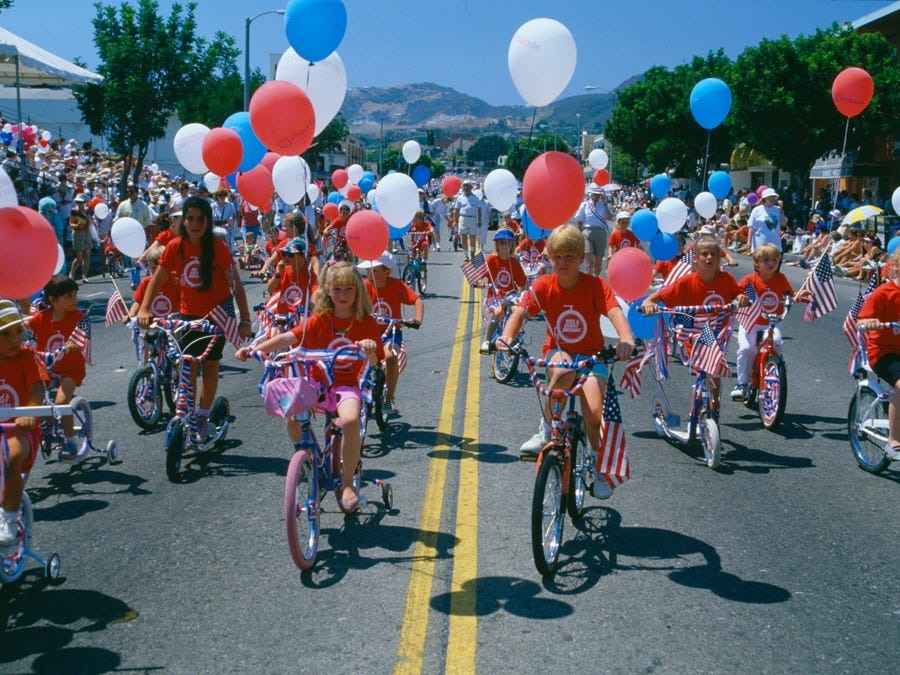
This photograph captures an American Fourth of July parade in 1989. The scene is filled with children riding decorated bicycles adorned with American flags and colorful red, white, and blue balloons. Their matching red shirts add a sense of unity and festivity to the celebration.
Surprisingly, there is no officially documented reason for why the American flag is red, white, and blue. According to AARP, the closest explanation comes from Charles Thompson, secretary of the Continental Congress, who assisted in the flag’s design.
In a report to Congress on June 20, 1782, he explained, “White signifies purity and innocence. Red hardiness and valor and blue signifies vigilance, perseverance and justice.” This interpretation has since become widely accepted as the symbolic meaning behind the flag’s colors.
19. A parade in Wantagh, Long Island on July 4, 1961
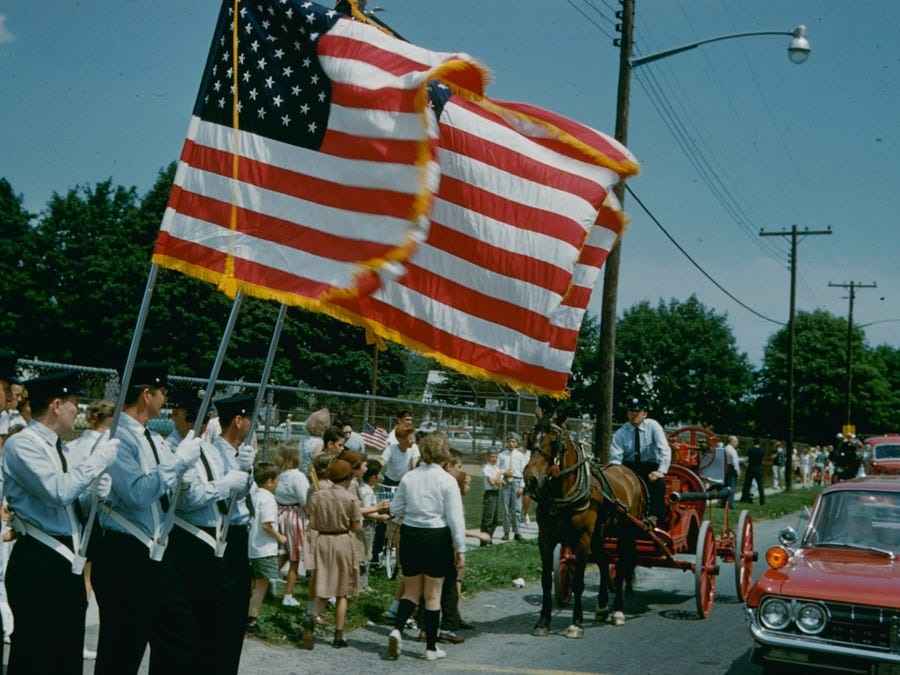
20. Contestants at the Nathan’s Hot Dog Eating Contest at Coney Island, July 4, 1987

21. An antique convertible in a July Fourth parade, Pacific Palisades, California, 1989
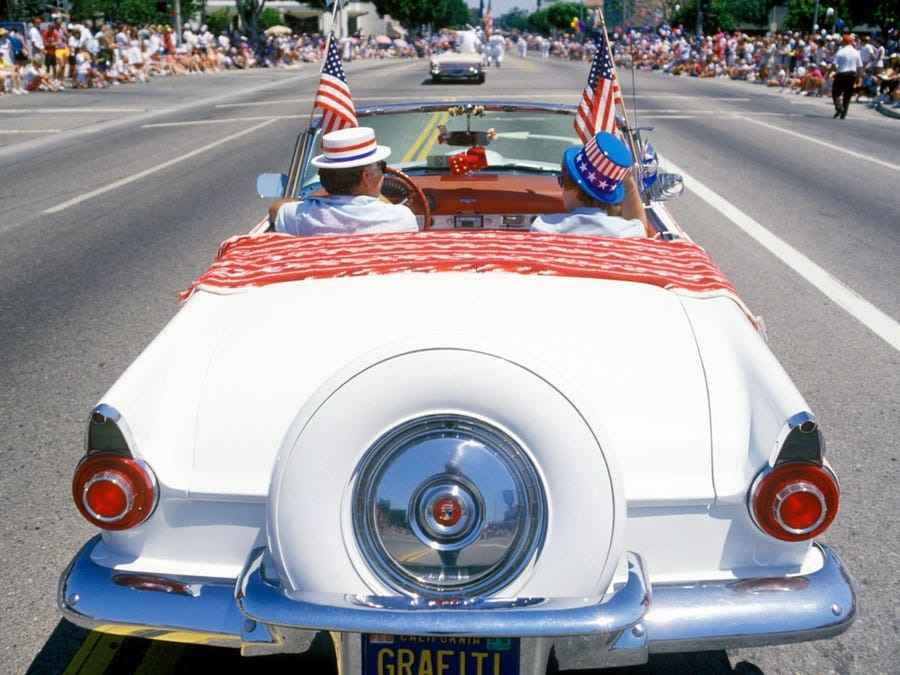
22. Rock Hall Senior Citizens, Maryland, July 4, 1991

23. A celebration in the Esplanade in Boston, July 4, 1996
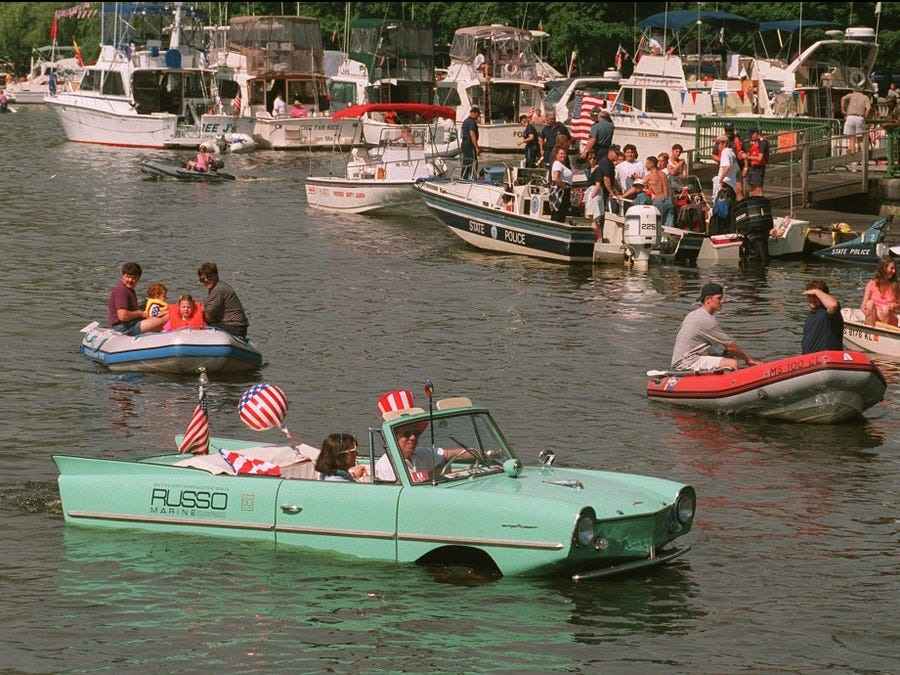
24. A child dressed as George Washington in the Lititz Springs Park, Pennsylvania baby parade, 1955
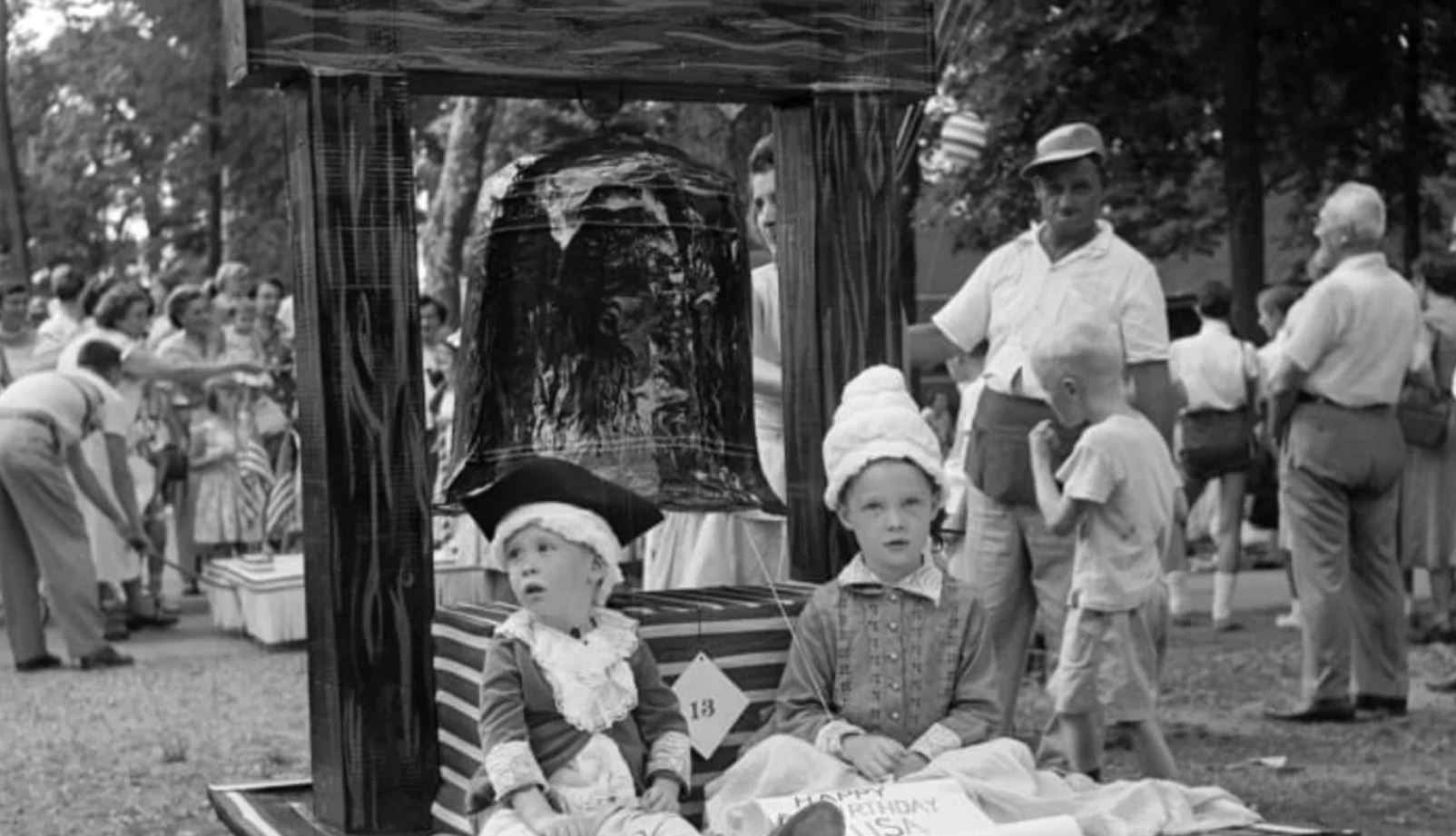
25. Bicycle riders in a parade on the Fourth of July at Vale, Oregon
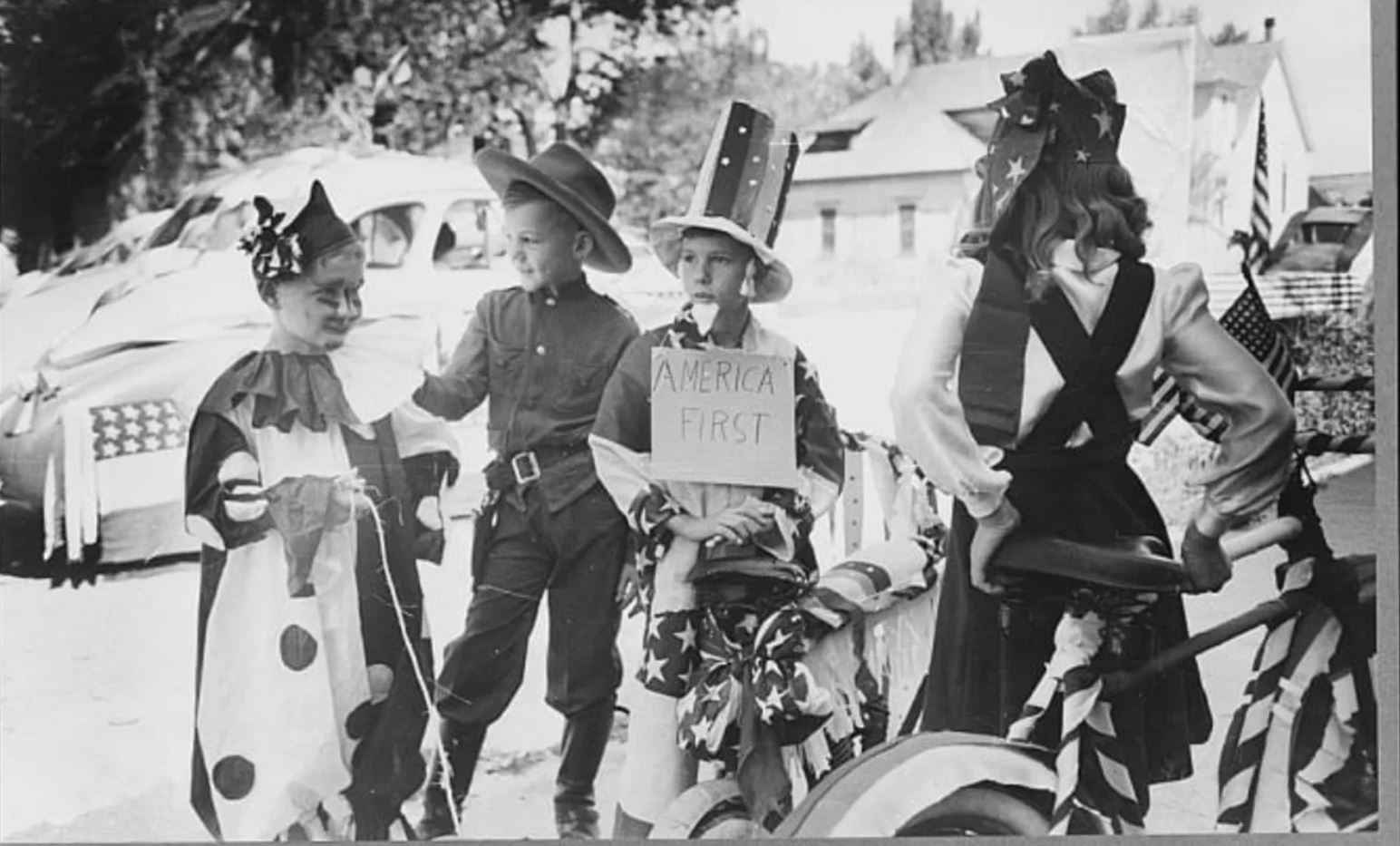
26. Jennifer Gray’s grandparents George and Shirley Costello, were poster children for patriotism at Runnemede’s Fourth of July celebration in 1976
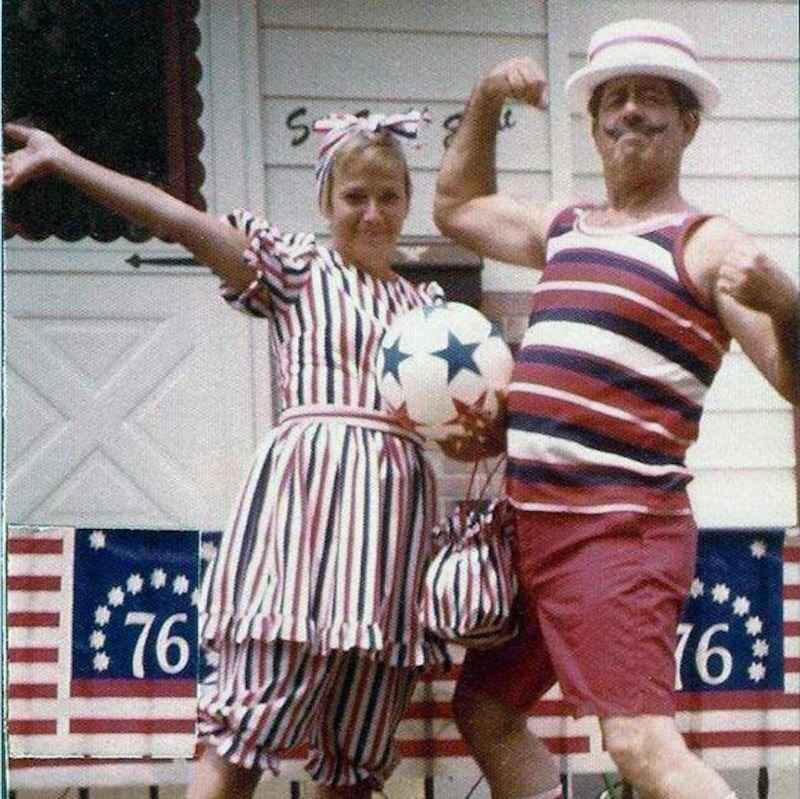
27. A parade in Franklin Township (Somerset County) in the 1940s featured historical costumes and decorated bikes

28. The Bound Brook Drum and Bugle Crops shown marching in a Fourth of July parade on Atlantic City’s boardwalk in 1959
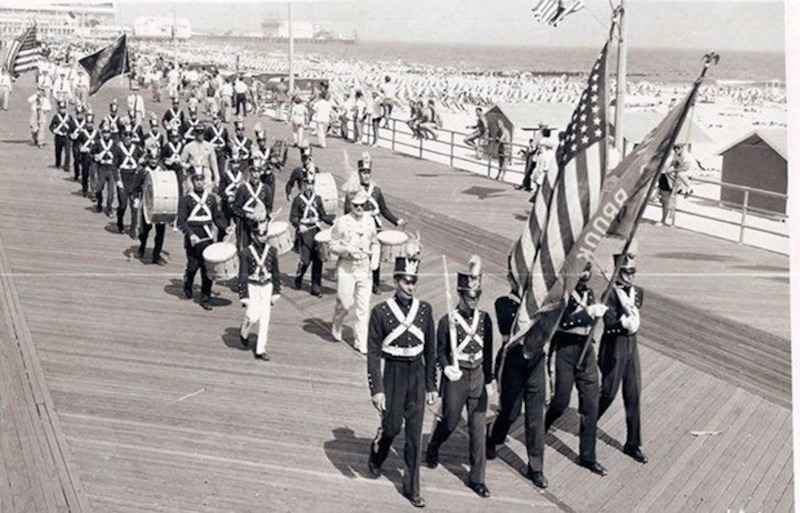
29. Children show off their patriotic vehicles during Audubon’s 1950 Independence Day festivities
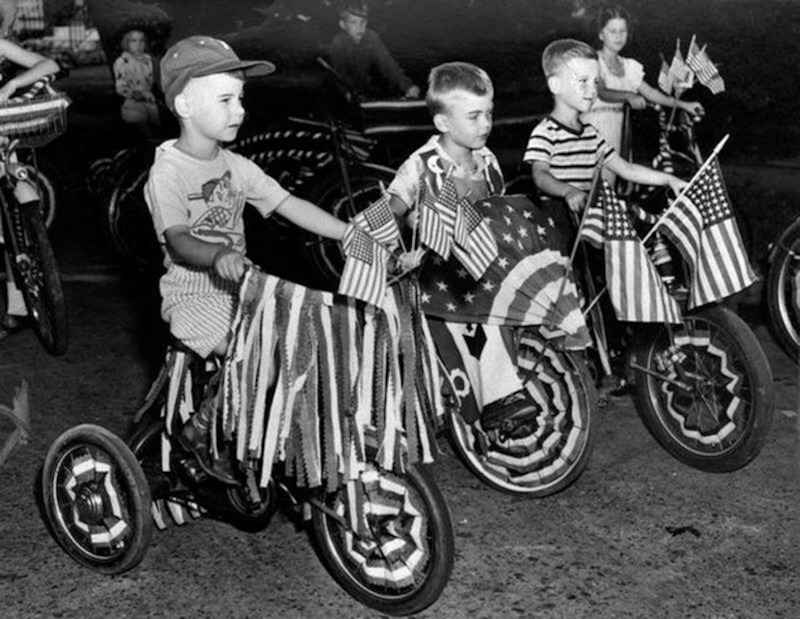
30. Elbert Pickell and his 5-year-old sister, Alice ready to participate in a patriotic parade in Readington in 1908
